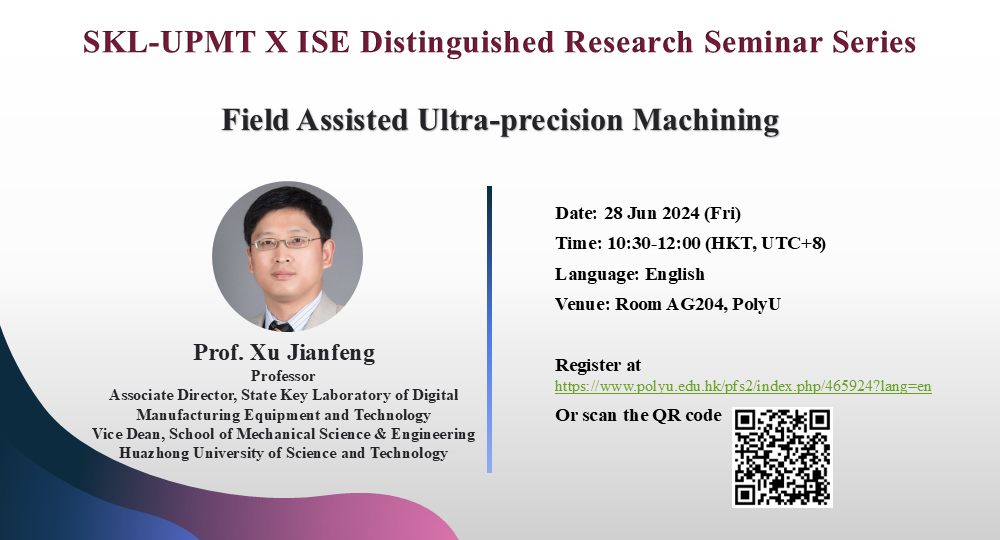[SKL-UPMT X ISE Distinguished Research Seminar Series] Field Assisted Ultra-precision Machining
Seminar

-
Date
28 Jun 2024
-
Organiser
SKL-UPMT X ISE X HKSPE
-
Time
10:30 - 12:00
-
Venue
AG204, PolyU Map
Speaker
Prof. Xu Jianfeng
Summary
With the rapid development of aerospace precision optical detection, guidance technology and precision medical detection technology, the demand for high-precision hard and brittle optical components in the aerospace, advanced optics and radiation detection devices is continuously rising. Hard and brittle optical components with complex surface shapes are the most technically challenging and demanding core parts in the field of ultra-precision manufacturing. As it is difficult to satisfy the requirements of ultra-high surface quality and low subsurface damage by applying a single type of ultra-precision machining method, the field-assisted machining technology is proposed for the ultra-precision machining of the difficult-to-cut materials. The field-assisted machining technology is applied to break through the already existed ultra-precision machining limitations, the defect-free surface with nano-scale profile accuracy and sub-nanometer-level roughness. Combined with material science, physics, thermodynamics and other interdisciplinary, the technology and mechanisms of laser in-situ assisted machining, high frequency elliptical vibration assisted machining, ductile machining of ion implanted materials, and plasma assisted polishing of diamond will be elaborated in this talk. Free control of field form, material removal mechanism, low-damage and high-quality surface forming frontier science and technology in the field of ultra-precision machining are reported. Finally, we discuss some challenges in realizing high-precision and low-damage manufacturing of complex and difficult-to-machine optical components using field assisted ultra-precision manufacturing technology, and articulated the research challenges and opportunities of ultra-precision manufacturing of complex optical components in the future.



